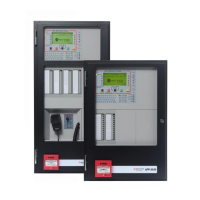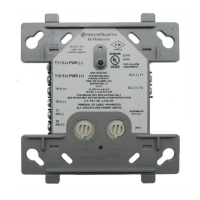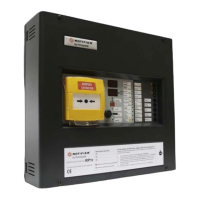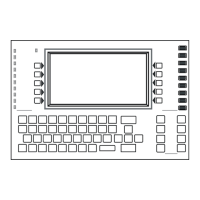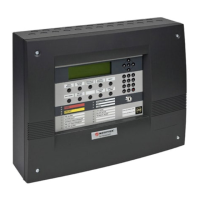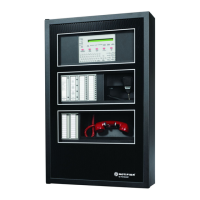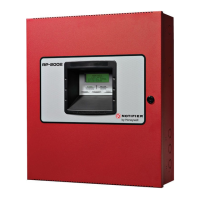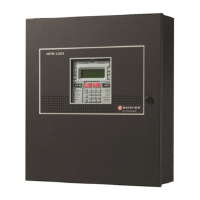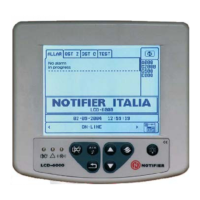100 NCA-2 Manual — P/N 52482:M5 03/20/2019
Logic Equations Equations
Example: ANYX(2,N01Z02,N01Z05,N02Z09)
If any two or more of the arguments are in alarm the output point will be activated.
The X amount may be a value from 1 through 9.
• The “RANGE” Operator
Each argument within the range must conform to the requirements of the governing function. The range limit is 20 consecutive
arguments.
Example: AND(RANGE(N01Z1,N02Z20))
Zone 1 through Zone 20 must all be active to activate the logic zone.
• The “DIS(point argument)” Operator
Requires that the point argument be disabled for the operator to go active.
• The “PRE(point argument)” Operator
Requires that the point argument be in prealarm for the operator to go active.
Example: AND(N01L1D1,PRE(N01L1D2))
The detector at address N01L1D1 must be active and the detector at N01L1D2 must be in prealarm for this equation to go active.
• The “SUP(point argument)” Operator
Requires that the point argument be in an active supervisory state for the operator to go active.
Example: OR(N01L1D1,SUP(N02L1M1))
The detector at address L1D1 must be active, or the module at N01L1M1 must be in an active supervisory state, for the equation to
go active.
• The “FIRE(point argument)” Operator
Requires that the point argument be in an active fire alarm state for the operator to go active.
Example: AND(N01L1D1,FIRE(N01L1M1),FIRE(N02L1M2))
The detector at address N01L1D1 must be active, and the modules at N01L1M1 and N02L1M2 must be in an active fire alarm state,
for the equation to go active.
• The “NON(point argument)” Operator
Requires that the point argument be in an active non-alarm state for the operator to go active.
Example: AND(N01L1D1,NON(N02L1M1))
The detector at address N01L1D1 must be active, and the module at address N02L1M1 must be in an active non-fire alarm state, for
the equation to go active.
• The “SEC(point argument)” Operator
Requires that the point argument be in an active security alarm state for the operator to go active.
Example: AND(N01L1M1,SEC(N01L1M2))
The module at address N01L1M1 must be active, and the module at address N01L1M2 must be in an active security alarm state, for
the equation to go active.
• The “AUTO(point argument)” Operator
1
This operator will evaluate as “Active” if all of the SCS switches or specified switch group are in the “Auto” position.
Examples:
OR(AUTO(A1G16))
The switch associated with switch group 16 on Annunciator 1 must be set as “Auto” for the equation to go active.
OR(AUTO(A1))
All the switches of Annunciator 1 must be set to “Auto” for the equation to go active.
• The “NORM(point argument)” Operator
1
This operator will evaluate as “Active” if the entire SCS device or specified switch group is in a “normal” state.
Examples:
OR(NORM(A1G16))
The switch associated with switch group 16 on Annunciator 1 must be in the “normal” state for the equation to go active.
OR(NORM(A1)
All switches on Annunciator 1 must be in the “normal” state for the equation to go active.
• The “SCSDIS(point argument)” Operator
1
For use with the SCS-8L only. This operator will evaluate as “Active” if the keyswitch on the specified SCS device is in the
disabled position.
Example: OR(SCSDIS(A25))
If the keyswitch on annunciator 25 is disabled, this equation will go active.
1
For use with Smoke Control applications only.
Time-based Functions
The panel supports three time-based functions: DEL, SDEL, and TIM. Special rules apply to an equation containing a time-based func-
tion:
• Only one time-based function may be used in an equation.
• The time-based function must appear only once, as the first entry of the equation.
• It may not be nested within parentheses in the equation.

